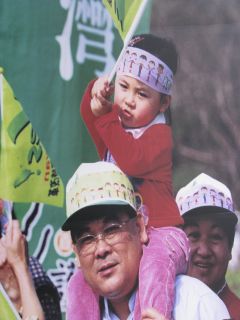Who are the Taiwanese? Where are they originally from and what are the major trends in Taiwanese politics today? For many people in the United States and Europe, Taiwan is an unknown, faraway place. Some older people remember it as Formosa, while for others the term “Free China” comes to mind. During the past 30 years it has grown into an economic and technological powerhouse, and it was once referred to as one of the four “Asian Tigers.”
By Gerrit van der Wees
For many people in the United States and Europe, Taiwan is an unknown, faraway place. Some older people remember it as Formosa, while for others the term “Free China” comes to mind. During the past 30 years it has grown into an economic and technological powerhouse, and it was once referred to as one of the four “Asian Tigers.”
It is all of that, but also more than that. To understand present-day Taiwan one has to start by looking at its history and get a better feeling of “where the Taiwanese are coming from.” Taiwan’s origins can be found in the aboriginal tribes, who inhabited the island prior to the early 1600s when the Dutch and Spanish came to the island.
However, the original tribes only constitute 2 to 3 percent of the present population: the Dutch and Spanish colonial powers imported Chinese laborers to work on the rice and sugar plantations. They gradually settled, intermingled with the aborigines, and their descendants, the native Taiwanese, constitute some 85 percent of the population.
During its colorful history, Taiwan went through many turbulent changes: in 1887 it was declared a “province of China”, but this lasted only eight years: in 1895 China lost the Sino-Japanese War and for the next 50 years, the island was a Japanese colony. Following World War II it was put under “temporary occupation” of Chiang Kai-shek, who was losing the Chinese Civil War to Mao’s Communist forces.
The next four decades (late 1940s through late 1980s) the island suffered under the harsh rule of the Chinese Nationalists (who constitute 15 percent of the population), and the native Taiwanese majority were told they were “Chinese.” However, all of that changed again in the late 1980s, when the people on the island achieved a momentous transition to democracy.
So, Taiwan now enjoys a vivacious multi-party political system, with hard-fought elections every four years. The next major election is coming up in January 2012, with incumbent President Ma Ying-jeou of the Kuomintang battling it out with Dr. Tsai Ing-wen of the Democratic Progressive Party (DPP) for the presidency, and a chance to steer Taiwan in their respective direction.
The major schism on the island is between the “blues” and the “green.” The “blues” are the Kuomintang and associated groups who have their roots in the old Kuomintang of Chiang Kai-shek, and they want to edge closer to China. The “greens” are the DPP and their supporters, who have their roots in the native Taiwanese population, and who want Taiwan to be a full and equal member in the international community.
The Taiwanese want to come to a modus vivendi with China and live next to each other as friendly neighbors. However, the authorities in Beijing (and some old timers in the Kuomintang) still live under the spell of the old Chinese Civil War, fought on the mainland between the Nationalists and Communists and strive for “unification.”.
If the international community wants a peaceful resolution that is in line with the aspirations of the Taiwanese people, then we need to do much more than we are doing now: we need to clearly express our support for democracy in Taiwan, and work harder to bring Taiwan into the family of nations as a full and equal member.
Gerrit van der Wees is editor of Taiwan Communiqué, a publication dedicated to human rights and democracy in Taiwan.




